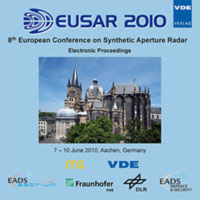Evaluation of RADARSAT-2 Yaw Steering for SMTI Applications
Konferenz: EUSAR 2010 - 8th European Conference on Synthetic Aperture Radar
07.06.2010 - 10.06.2010 in Aachen, Germany
Tagungsband: EUSAR 2010
Seiten: 4Sprache: EnglischTyp: PDF
Persönliche VDE-Mitglieder erhalten auf diesen Artikel 10% Rabatt
Autoren:
Beaulne, Pierre D.; Livingstone, Charles E. (Defence Research and Development Canada (DRDC) - Ottawa, Ottawa, Canada)
Inhalt:
RADARSAT-2 is mechanically steered in yaw to provide a measure of earth rotation compensation and thus bring the data Doppler centroids (DC) near zero Hz. The satellite attitude control uses an algorithm whose inputs are GPS measured satellite position and the star-tracker measured attitude of the satellite. The GPS data are used to generate an orbit state vector and the star-tracker data are used to generate an attitude state vector both of which are reported with the radar signal data. Examination of DC distribution and stationary-world phase from along-track interferometry (ATI) from 53 RADARSAT-2 SMTI (Surface Moving Target Indication) scenes has been used to explore systematic and random steering angle discrepancies between radar observations and the reported attitude state vector data. Systematic pointing offset components derived from these data provide an improved earth-rotation compensation model for ocean target measurements.


